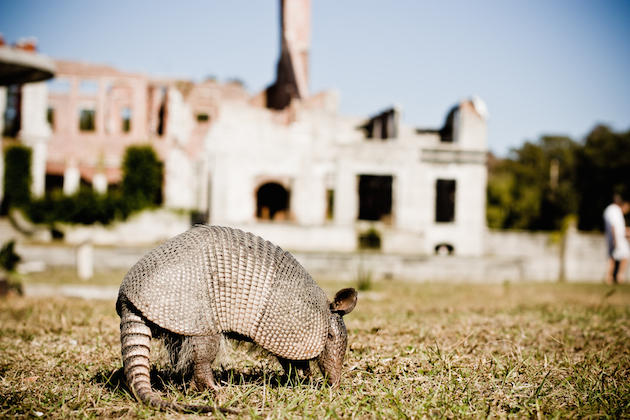Armadillos are bulletproof.
That’s the conclusion people are drawing after a man failed to kill one with three gunshots. According to Reuters, the unnamed man walked out of his Marietta home at 3 a.m. with a .38 revolver, intending to make short work of the short animal. At least one bullet ricocheted back at the man, hitting him in the head. He was airlifted to a nearby hospital, where his jaw was wired shut.
No one knows what became of the armadillo, or if it was even hurt.
In all seriousness, an armadillo’s shell is surprisingly strong. It’s made of dermal bone—bone formed in the dermis layer of the skin. It is covered in a hard, banded epidermis, with different species of armadillo having a different number of bands making up the shell.
They also carry leprosy. Armadillos are one of very few animals that contract leprosy, and while they are unlikely to infect humans, the Centers for Disease Control and Prevention says it can happen.
The CDC says 95 percent of the human population is immune, but the rest are susceptible to transmission through coughing and sneezing. Leprosy can be transmitted to humans from armadillos via contact.
Florida has seen a recent spike in leprosy cases, with some possibly due to armadillos. The state typically sees two to twelve cases each year, but an abnormally high nine were diagnosed before the end of July.
Maybe that’s why Sporting Classics contributor and author Mike Altizer’s friend warned visiting hunters to steer clear of armadillos in Florida. Two visiting hunters came looking for deer and hogs but found the Sunshine State had more in store for them.
Check out the story in Altizer’s “Ramblings” column in the upcoming September/October issue of Sporting Classics, on newsstands September 1.
Cover image: Thinkstock


